Beef Noodle Soup Chinese Niu Rou Mian
TAIWAN BEEF NOODLE SOUP / NIU ROU MIAN
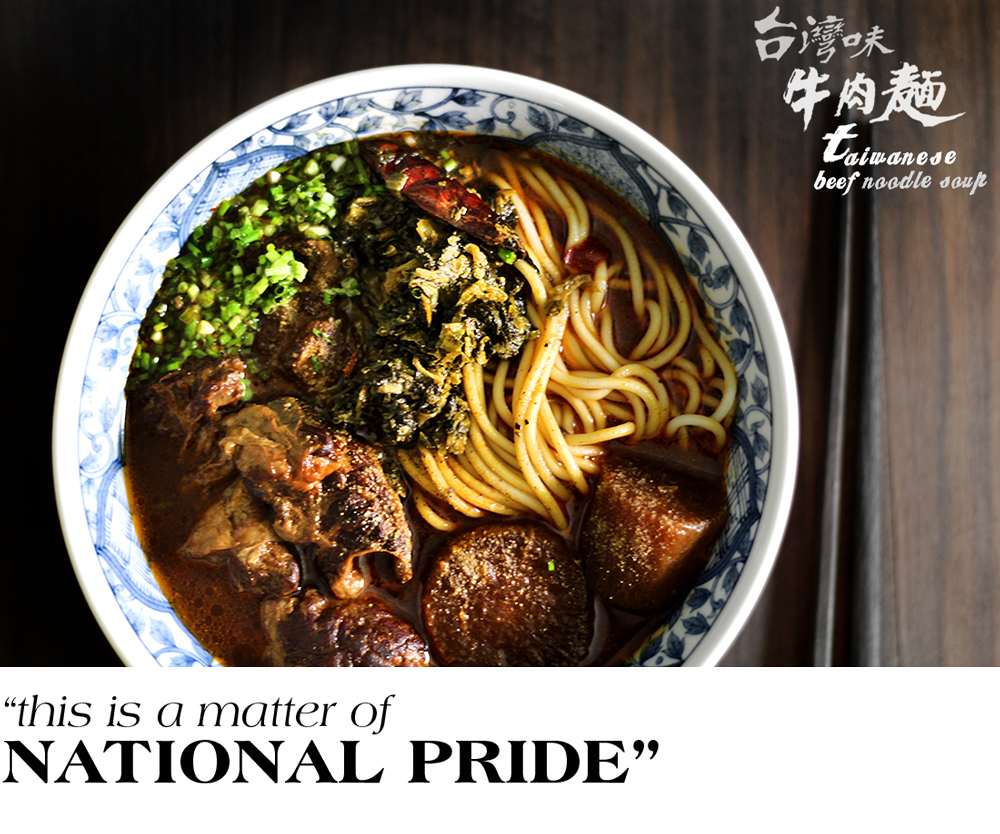
(??)???) UPDATES AVAILABLE * 2013/03/11: online sources for ingredients added!
I'm gonna start this by saying something that seems completely irrelevant… The Japanese are marketing geniuses. No, not geniuses. Gurus! No no, NOT gurus. GODS!!! It's like their entire way of life comes with a built-in marketing system that in comparison would reduce Don Draper down to nothing but just a raging alcoholic. I mean really, something about their culture is so mesmerizing that… OH look! Hello Kitty! (slap! FOCUS!) …that they've become easily one of the biggest culture exporters in the world, and most evidently in their success in pushing their cuisine into a world domination that's stronger than the force of nature. Not so long ago who would've thought that Americans, the genetically-hardwired loyal patrons of well-done white meat chicken, would pay $200 and UP to surrender their fork'n knife, pick up the chopsticks (some awkwardly) and chew down a piece of raw fish on vinegary rice then moan, "Mmmmm… UMAAAAMI…". Seriously!! Forget X-men, THIS is where human mutation takes a giant leap!
I'm telling you, it's crazy. Japanese can sell anything like it has a halo on top of it.
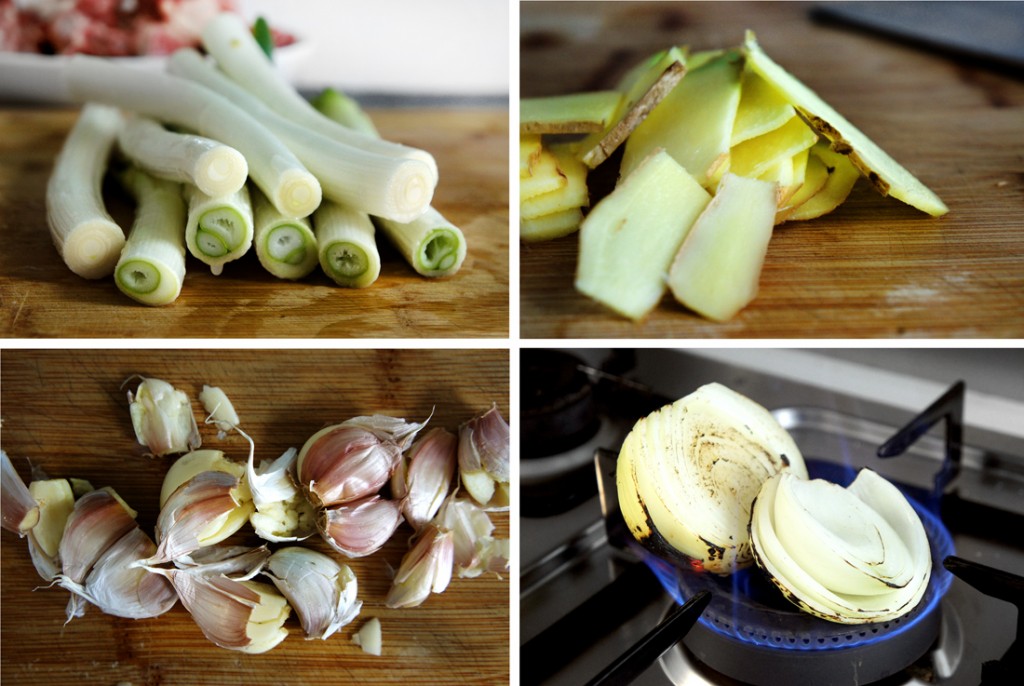
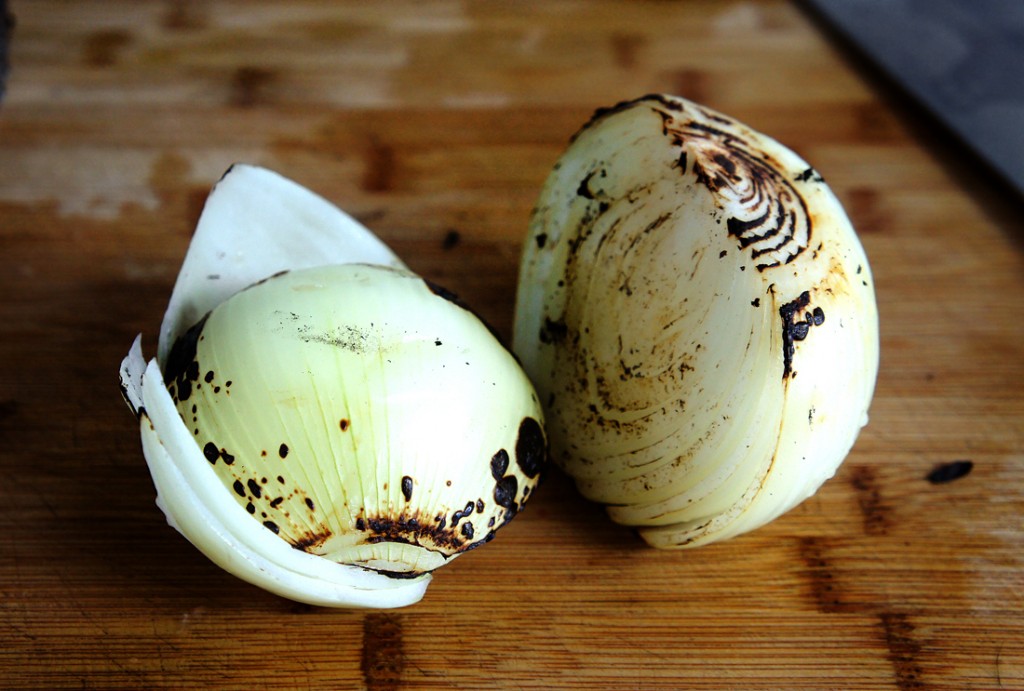
I know you're thinking, "There better be a point in this because THAT picture looks nothing like ramen…". There. My point's exactly. Ramen. The Japanese bowl of noodles that has taken New York (then the rest of America) by the storm starting a few years ago. It's about the most highly regarded bowl of noodle soup out there, $15 high. Think Vietnamese Pho Bo – a dim and smudgy joint tucked in the corner of Chinatown somewhere. Think ramen – wooooh zen-like environment, streamlined dark-wood counter with a super serious chef behind it who looks like he whispers to his knives and noodles. It even inspired a movie called "The Ramen Girl". It's just noodles man! Damn it! They're good!
Yeah, back to there's a point in here somewhere. Point is I'm saying this out of the deepest admiration for their craft, but the most mind-boggling frustration for our own. Because not just the Japanese, when it comes to noodles, everyone else seems to be getting a bit of the spotlight but us.
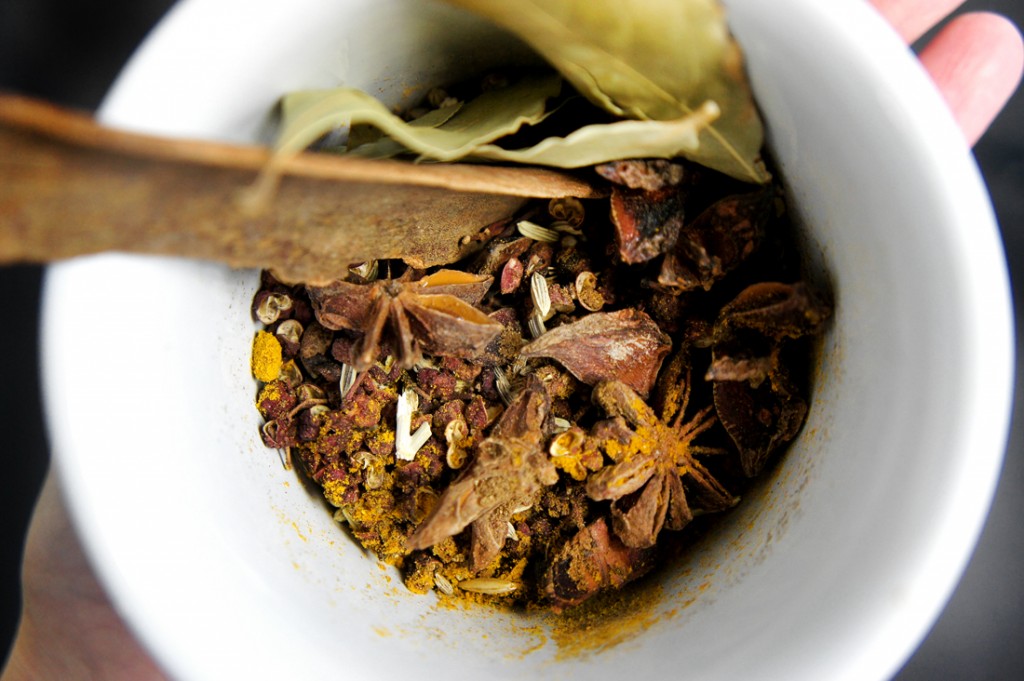
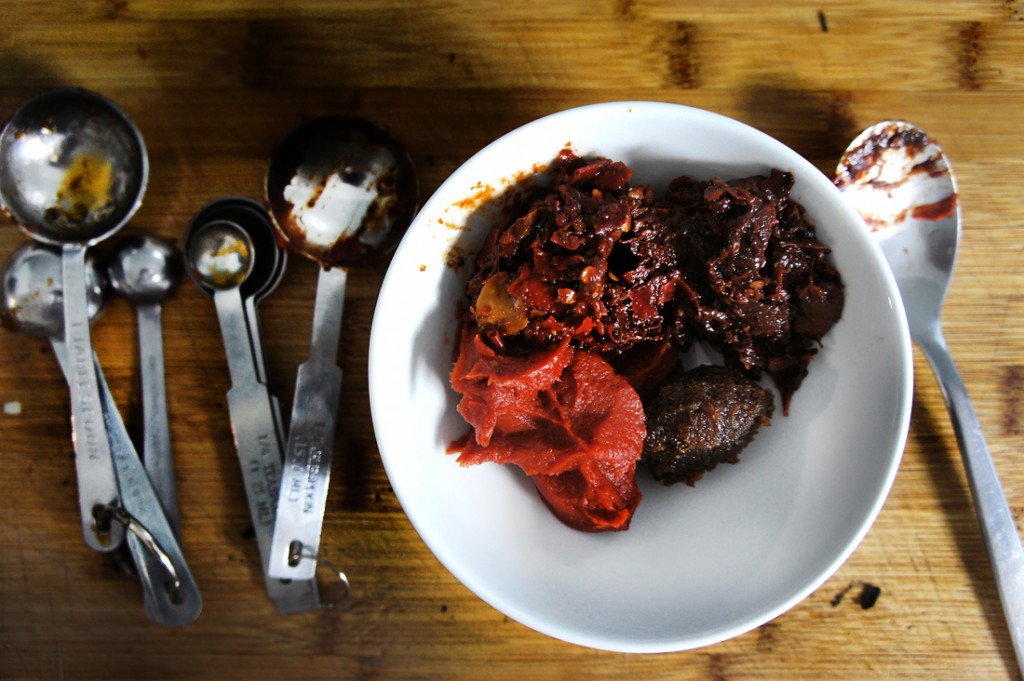
I was born in this little island named, I don't know if you've heard, Taiwan (beaches?… no that's Thailand…). The Japanese were there for awhile you know – 50 years! One would've thought that we had picked up a trick or two on how to make ourselves look cool. But no! Taiwanese are stubborn and proud blood who likes everything wrapped up in red-stripes plastic bags, then eat it under fluorescent light. I just don't get it. We deserve some buzz, too and all we lack is some serious packaging. You know that little pork bun that David Chung is getting all the credits for? That's actually us. And the worldwide phenomenon, the bubble tea? Us again. Yeah, we don't say.
But perhaps Taiwan's will to shine isn't completely flaccid yet. At least staring in the face of ramen's raging success still aroused a bit emptiness inside…
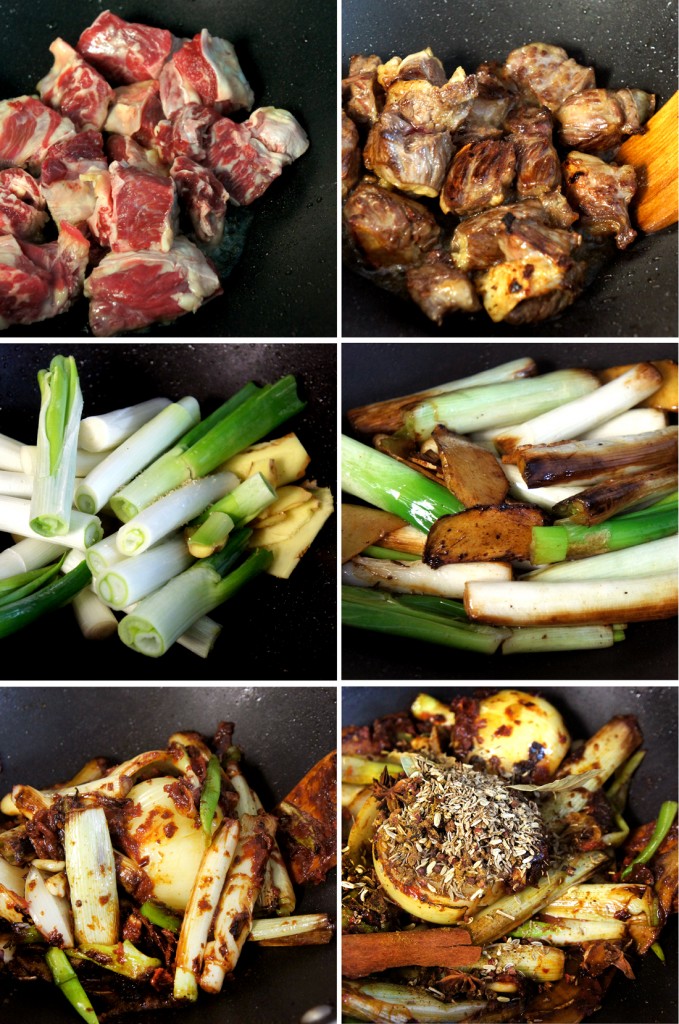
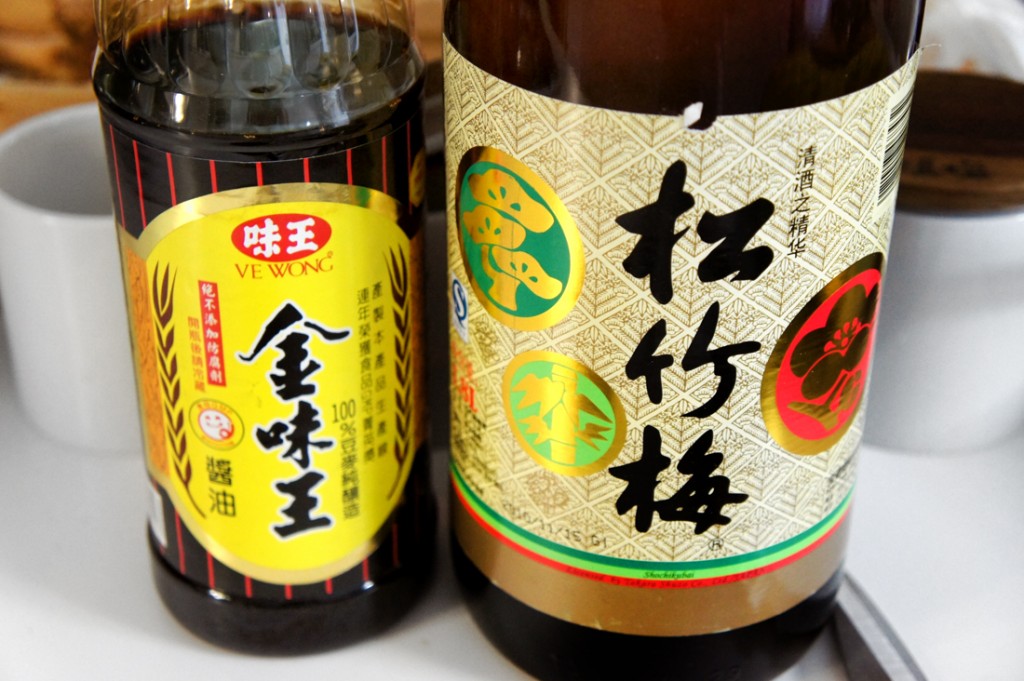
So in the wake of a gradually apparent international irrelevance and the effort to resuscitate the dying will of even-trying, a few years back the government initiated a regional contest of our very own national noodle soup. Niu rou Mien (It translates into beef noodle. If it doesn't sound cool it's because it's not in Japanese… try "nyoru men"). It successfully injected a new-found enthusiasm and energy into this almost old-school dish across the country (don't get too excited because the buzz is still very well contained ONLY within the country) that all of a sudden niurou mien is cool again. No, more than cool. It is now a matter of national pride.

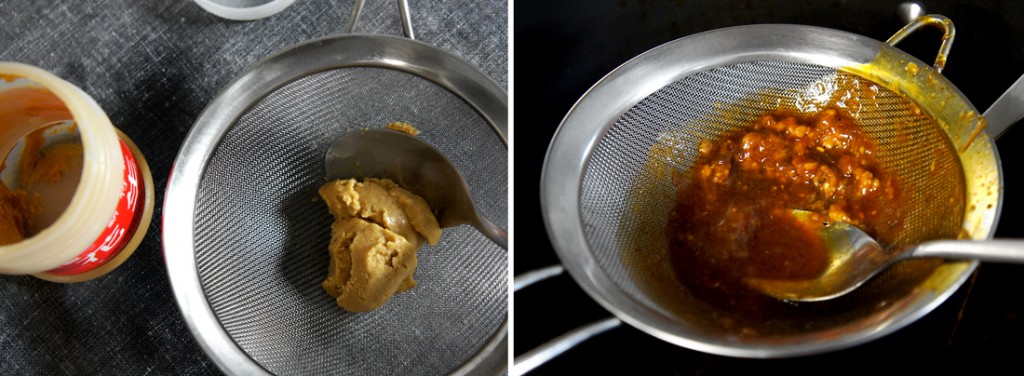

I assure you that I am no cultural ambassador or tourism promoter (yeah I'm not done yet). In fact when it comes to this kinda-like-home island, I'm meaner to it than anyone else I know. So this isn't about nationalism. This is about giving credits where credit's due. We're not much (I aim to exaggerate) but we're still something. And I'm going to put this little post out there (did I mention I so happen to make a very mean niurou mien?). And hopes that someday, someone would stumble into this little microscopic blog. A someone who's much better than me at making stuff look super cool, who happens to be looking for the next super big noodle idea, and coincidentally knows a somebody else who has $500k disposable cash to invest in a small-yet-super-trendy restaurant in New York that charges you $15 for a bowl. And when ALL THAT finally… and super miraculously happened, people would start saying, "Man, Taiwan's niurou mien is super AWESOME!".
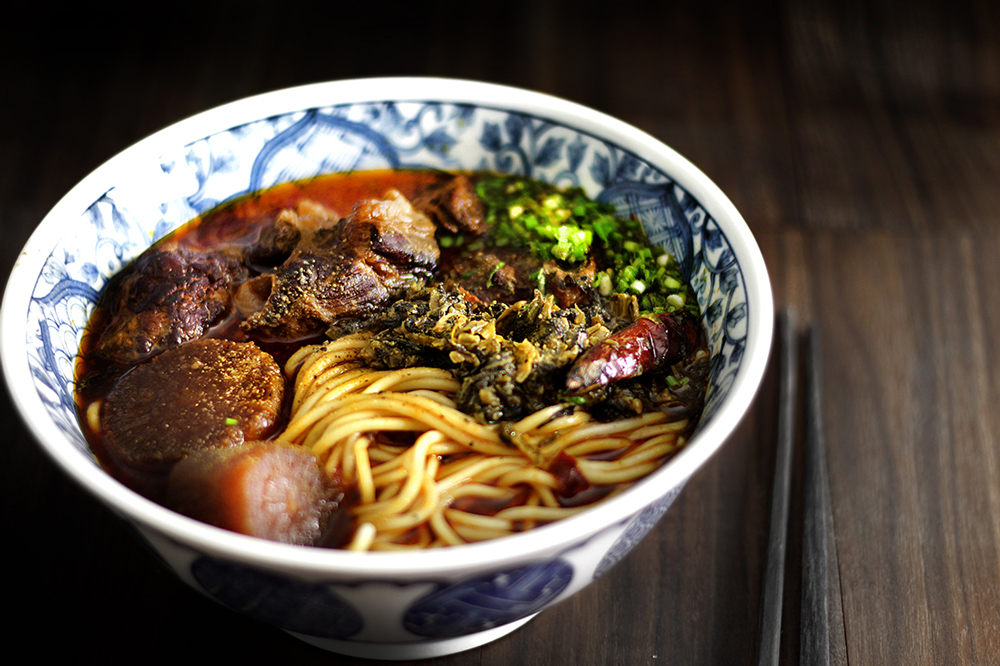
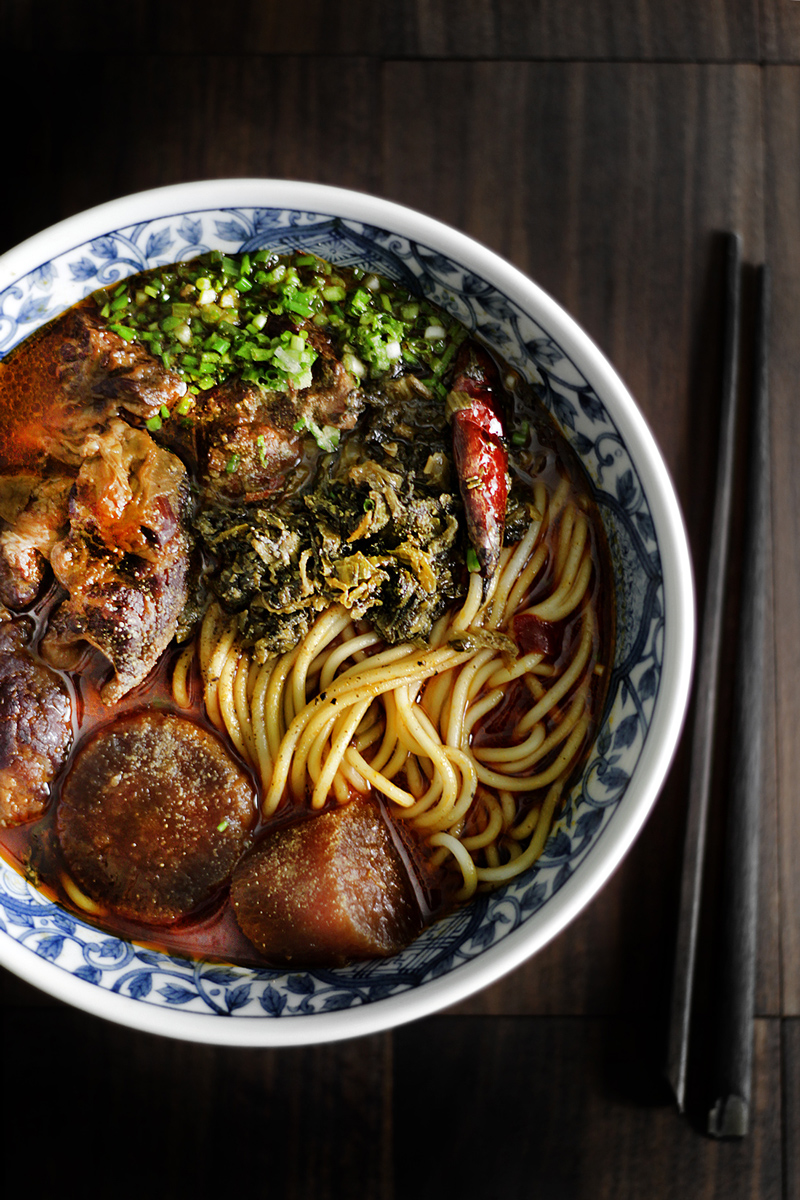
Serving: 6 ~ 7. Updated on 2012/10/15: recipe for sauteed pickled cabbage below.
* The recipe calls for a very deep and rich stock as the base/foundation of the soup. This is why I published the golden foundation post right before this one. The components in this stock would vary a little bit, but the technique is completely the same. If you have homemade, UNSALTED stock at home already and aim for a quicker recipe, you could just use what you have on hand already but the flavor may be less intense.
** This dish is usually prepared in 2 parts. There's the pot of braised beef that should be salty and intense, and the unsalted stock that's reserved to dilute it later when ready to serve.
Stock: You would need a total of 10 ~ 11 cups of stock. Details on how to make the stock/broth, please go here.
- 2 large beef shank bones (cut into pieces), or 5~6 pieces of rib bones
- 1 chicken scaffolds, or 1/2 a free range chicken
- 1 pig's trotter (cut into 4 pieces)
- Aromatics
- 1 medium onion
- 1 small carrot
- 2 jumbo scallions
- 5 slices of ginger
- 5 cloves of garlic
- 3 star anice
- 1/2 of cinnamon stick
- 1 tbsp of black peppercorns
- 1/2 tsp of fennel seeds
- 1/2 tsp of cumin seeds
Make the stock according to the instructions in the previous post *. It would take several hours but it can be made days ahead of time.
Niurou Mien Ingredients: (I warn you it's quite long…) *Posharp Store is a good sourcing option for Chinese ingredients.
- 1000 g of beef riblets meat, or boneless shortribs
- 400 g of jumbo scallions, cut into sections
- 60 g of ginger, cut into slices
- 1 head of garlic, smashed
- 1 large onion
- 1 tomato
- 2 tsp of rock sugar, or raw sugar
- 4 dried chili (optional if spicy is not your thing)
- 2 packs of Chinese aromatic herbs packet, or assemble a simple one of your own
- 6~7 star anise (depending on the size)
- 1 cinnamon stick
- 4 dry bay leaves
- 1 1/2 tbsp of fennel seeds
- 1 tbsp of cumin seeds
- 2 tbsp of whole Sichuan peppercorn
- 1 1/2 tsp of ground Sichuan peppercorn (for extra kick and "numbness")
- 1 tsp of ground coriander
- 1/4 tsp of five spice powder
- 1/4 tsp of black pepper
- Paste mix
- 6 tbsp of tomato paste
- 6 tbsp of douban paste (Chili bean paste. Can be purchased here or from major Asian markets)
- 1 tbsp + 1 tsp of shacha paste (Chinese BBQ sauce. Can also be found on Amazon)
- 1/3 tsp of curry powder
- Seasonings
- 1 cup of rice wine, or sake
- 1 cup of soy sauce + 1/3 ~ 1/4 cup for adjusting (Every brand of soy sauce has different saltiness. Avoid soy sauce that's on the "sweet" side, for ex Japanese brands)
- 2 tsp of rock sugar, or raw sugar
- Stock: 6 cups of stock/broth * (reserve the rest for later)
- To finish
- 1 tsp of rice vinegar
- 1 1/2 tbsp of unsweetened, or VERY LIGHTLY sweetened peanut butter (this is a bit weird but I really believe it adds to the depth of the flavor). Don't use Jippy.
- 5 ~ 6 cups of reserved stock/broth
- Garnish
- Finely diced baby spring onion
- Chinese pickled cabbage (more notes on that in the next post)
In timeline because this is in "GNBT" category.
2:00 ~ 2:30 pm: Dice the beef into 2″ x 2″ (5 x 5 cm) cubes, and divide them into 2 batches (for easy browning). Heat up a dutch oven or in my case, a wok on medium-high heat. Add 2 tbsp of oil, 1 batch of beef cubes and 1 tsp of raw sugar. Flip them occasionally and let the beef and sugar brown and caramelize on all sides. Take the first batch out onto a plate, and repeat the same step with the second batch until all browned as well. Then take all the beef cubes out and set aside.
2:30 ~ 2:40 pm: Add 3 tbsp of oil into the same pot, and add the jumbo scallions, ginger and 1 tsp of raw sugar. Leave them toasting in the pot on medium-high heat until they become very caramelized (almost seem a bit burnt). During this time, cut the onion in half and toast them over open fire on the stove until charred, then set a side. Once the scallions and gingers are caramelized, add the onion and garlics. Saute for a couple minutes more.
2:40 ~ 2:50 pm: Add the paste mix and saute until fragrant and the paste has darken in color, approx 2~3 min. Add the aromatic herbs now if you are assembling your own (add them later if you are using store-bought packets). Saute for another couple of minutes, then transfer EVERYTHING including the beef cubes into a pressure cooker or a large stock pot (or if you started with a big enough dutch oven then just stay with it). If you don't have a pressure cooker, you could take a look at review pages similar to 'NuWave Pressure Cooker: Which One Should You Get Your Hands On?' to get an idea of which one would be best for you! Anyway, back to the instructions for this delicious recipe. If there are brown bits on the bottom of the pot, deglaze with 1/4 cup of water and add to the pot as well.
2:50 ~ 3:00 pm: Add the seasonings and let it boil for a couple of seconds, then add 5 1/2 cup of stock (add the store-bought herbs packets now if that's what you are using). UPDATES 2013/05/08: oops I forgot but you should add the tomato (cut in half) at this point. It is now crucial to taste-test the seasonings. Different brands of soy sauce differs in saltiness and sweetness, so much that it is impossible to standardize by saying "however-many-cups of soy sauce". I would STRONGLY recommend using a LESS sweet version of soy sauce (you can see the one I'm using from the picture). Taste the soup now. It should be fairly salty (too salty to drink as a soup) with a SLIGHTEST (almost untraceable) hint of sweetness just to balance it off. If the saltiness seems too "sharp" and unrefined, add more rock sugar. If it's a bit too bland (in this case "drinkable" as a soup), add more soy sauce. I ended up adding 1/8 cup more of soy sauce to my pot (but with a less salty brand of soy sauce, it could be more).
3:00 ~ 4:00 pm (or 5:30 pm without pressure cooker): Put the pressure cooker lid on and bring to a "hiss" on high heat, then turn it down to medium-low and cook for 1 hour (reduce the cooking time to 45 min if using shortribs). If you are doing it on the stove-top, simmer for 2~2:30 hours.
4: 20 ~ 4:50 pm (or 5:30 ~ 6:00 pm): Open the lid once the pressure's completely release and check the done-ness of the beef. If they are still tough, keep cooking (lid on) for another 30 min. Prepare another large pot and rest a sieve on top of the pot. Strain everything through the sieve into another pot. Carefully pick out the beef cubes without breaking them, then use a wooden spoon to press VERY HARD on the scraps to extract every drop of juice left in them. You'd be surprise how much it is. Discard the scraps. Return the beef cubes back into the soup and add 1 tsp of rice vinegar, then dissolve the unsweetened peanut butter into the pot (or through a strainer if the peanut butter is chunky). UPDATES: 2013/06/24: I find that an extra 1 tbsp of uncooked tomato paste, dissolved in the end, adds a good layer of depth.
There. We are done.
To serve it, cook your favorite noodles (I like the fat ones) and dilute the soup with 1 : 1/2 as the ratio of braised beef soup: unsalted stock. So with 1 cup of braised beef soup, add 1/2 cup of unsalted stock. This would still yield a slightly salty soup but that's how I like it. Or you could simply use the braised beef soup only as a sauce in the "dry noodle" version.
MUST ADD spring onions and pickled cabbage. That's not even negotiable.
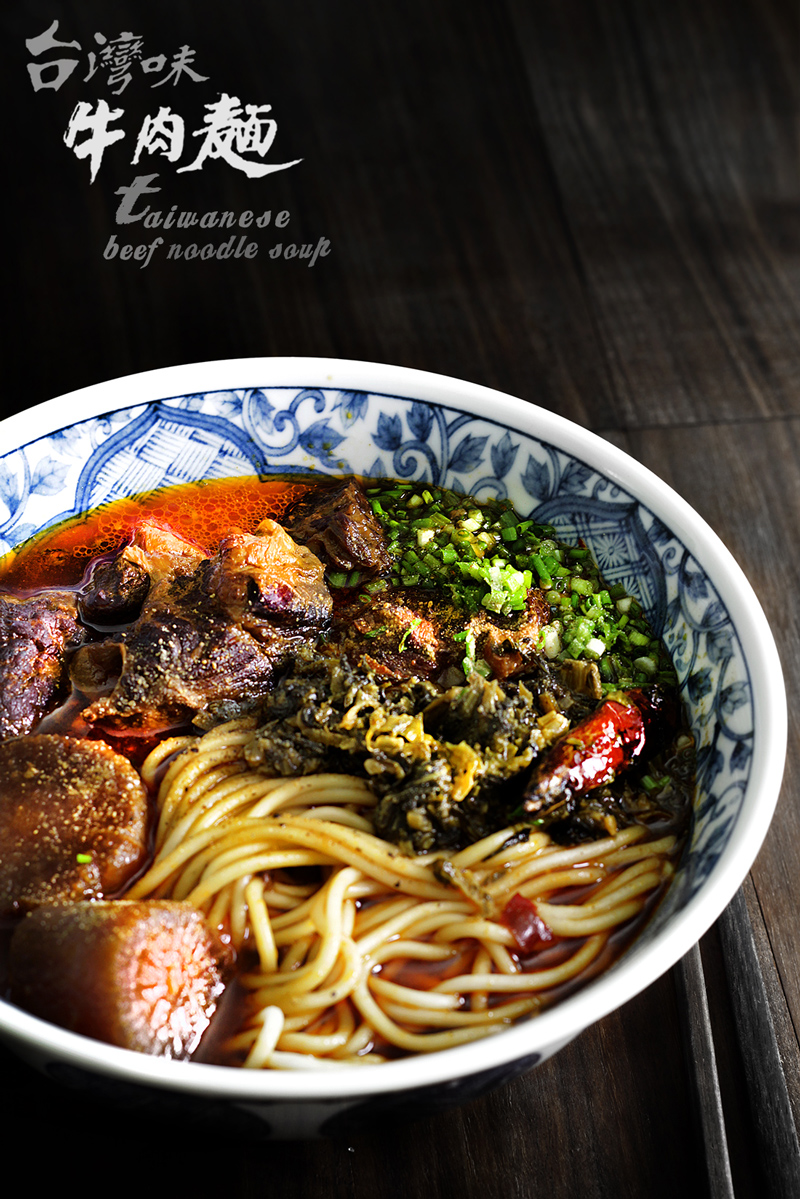
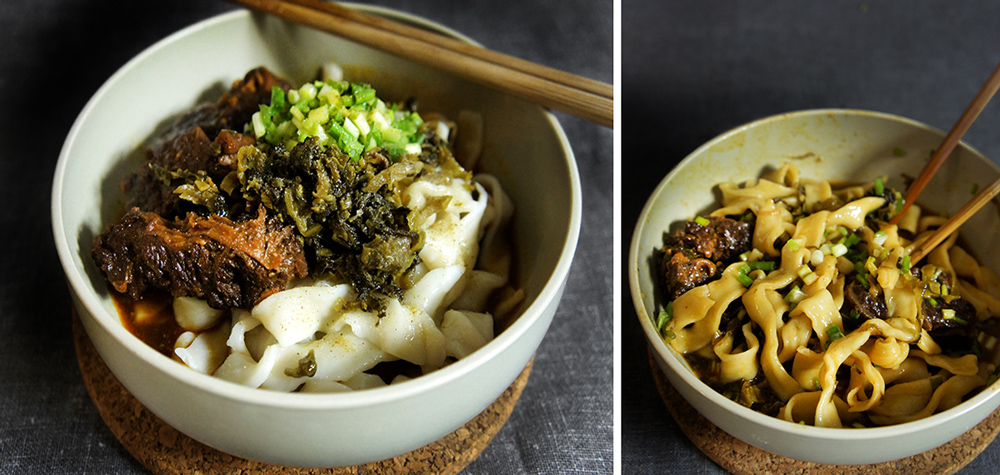
Saute Chinese Pickled Cabbage:
-
430 g of pickled Chinese cabbage ("Suan-cai". An olive-green pickled cabbage that's usually vacuum-packed, and is sold at major Asian markets)
-
6 dried chili
-
2 tbsp of sake
-
2 tsp of sugar
-
3 tsp of rice vinegar, or white wine vinegar
-
1 1/2 tbsp of Dijon mustard
-
Pinch of white pepper
- 5 tbsp of oil
- 1 tbsp of sesame oil
Rinse the cabbage clean and squeeze dry. Remove the tough fibers at the head of the cabbage, then separate the stalks and the leaves. Finely chop or slice the stalks and soak in water for 4~5 min. Then chop the leaves finely and add to the stems (which has been soaking for 5 min), and soak for another 2 min. Take the cabbage out of the water and squeeze it completely dry.
Heat up the oil plus the sesame oil in a wok or skillet, toast the dried chili in the oil until the color has darken. Add the cabbage, sake, sugar, rice vinegar and Dijon mustard and stir frequently until the moisture from the cabbage has mostly evaporated, and the volume has shrunken down to almost 1/2. This will take several minutes. Finish by dusting with a pinch of white pepper.
This should keep in the fridge for up to 3 weeks.

Related posts:
jacksonkrounist44.blogspot.com
Source: https://ladyandpups.com/2012/09/28/taiwan-beef-noodle-soup-niu-rou-mien-eng/
0 Response to "Beef Noodle Soup Chinese Niu Rou Mian"
Post a Comment